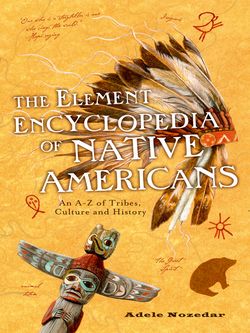Читать книгу The Element Encyclopedia of Native Americans: An A to Z of Tribes, Culture, and History - Adele Nozedar - Страница 48
BIG SPOTTED HORSE
Оглавление1836(?)–?
As a young Pawnee brave of 15 or 16 in 1852, Big Spotted Horse was chased by a Cheyenne warrior while taking part on a buffalo hunt in Kansas. The warrior, Alights on the Clouds, wore a protective material called scalemail which meant that he was impervious to arrows. Alights on the Clouds intended to count coup on Big Spotted Horse, and galloped toward his right hand side. What he did not know, however, was that Big Spotted Horse was left-handed; he turned to the right as Alights on the Clouds approached him with a sword, pulled back his bow, and struck home, piercing his enemy’s eye.
The young Big Spotted Horse had no idea what had happened until some of his fellow Pawnee hunters, seeing the body fall, shouted out. The Cheyenne, shocked at the death, retreated, but for the Pawnee, the killing of a warrior decked in protective metal discs was celebrated as a great victory. Big Spotted Horse’s name as a great warrior was made, and his exploits as a horse thief and warrior became the subject of folklore.
In one raid, in 1869, he led his men to a Cheyenne village near a river. There they stealthily untied the choicest horses, setting off for home with some 600 animals. Despite blizzards, they made it home intact to their village. However, horse raiding was very much frowned upon by the Indian agents, and 600 horses were too many to hide from Jacob Troth. Big Spotted Horse was called before him and ordered that the horses should be returned to the Cheyenne. Big Spotted Horse, determined not to be humiliated by such an action, refused, and was imprisoned. After five months he was released, however, when it was proved that there was no statute that made horse raiding illegal.
On returning to his village, Big Spotted Horse was outraged to find that only some 40 of the horses remained, the rest having been returned whence they came. In his anger, he joined the Wichita people in Oklahoma.
In 1872 Big Spotted Horse returned to his village with the intention of relocating his entire tribe to the Wichita territory, a move supported by them but disapproved of by the Pawnee chiefs, who did not want to leave. So Big Spotted Horse gathered some 300 supporters and returned to the Wichita; two years later, to the dismay of the Pawnee chiefs, the rest of the tribe followed him, despite the fact that the Wichita land was far less fertile than that of Nebraska.
